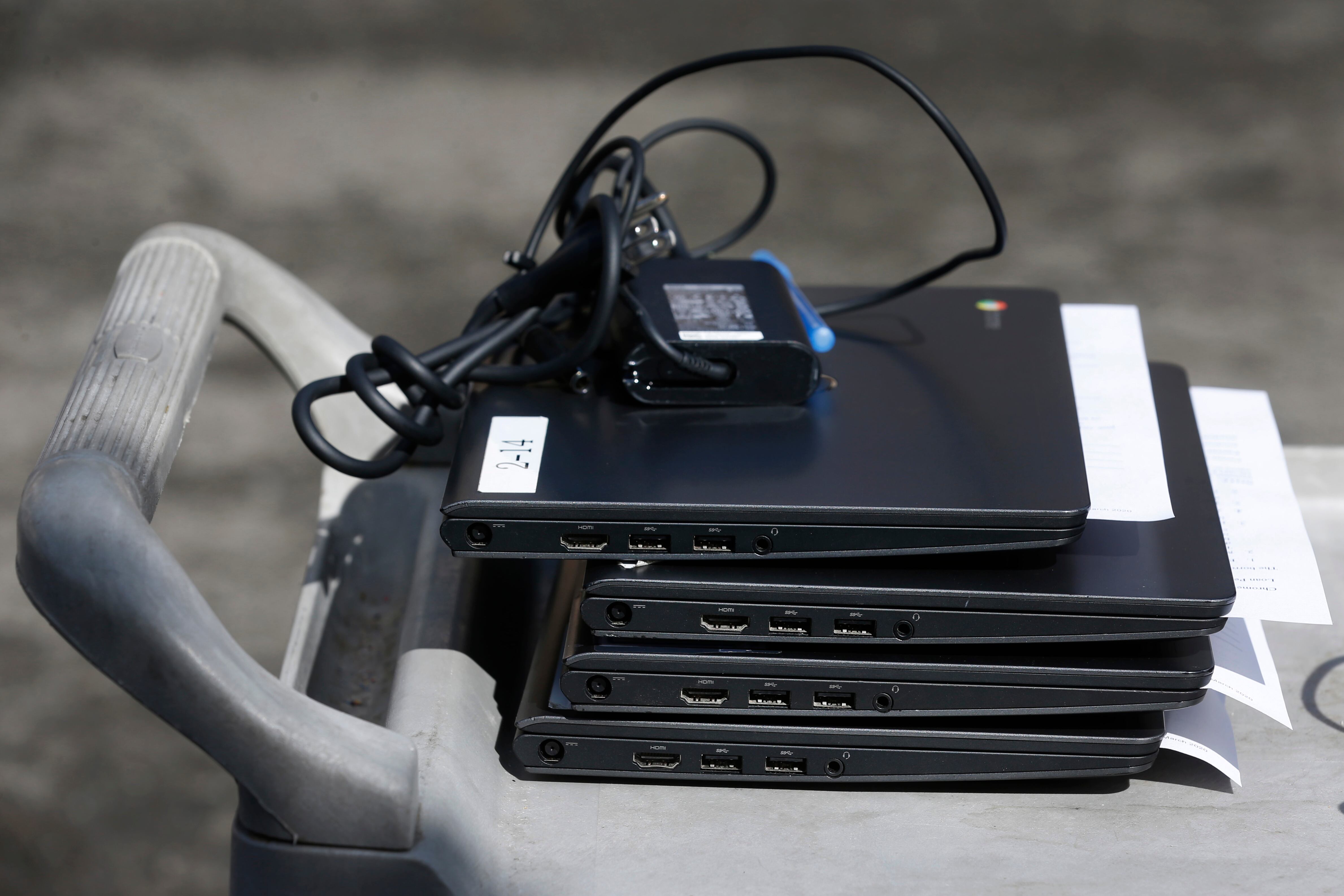Gov. Eric Holcomb wants to use $61 million in discretionary coronavirus relief to create remote learning and technology grants for Indiana schools, according to his pitch to the federal government.
Chalkbeat obtained a copy of Holcomb’s application to the U.S. Department of Education in which governors were asked to describe how they would spend the federal education relief that was set aside for state leaders to distribute how they choose.
Indiana is eligible to receive up to $61.6 million in discretionary funding for schools. The amount was determined by the number of school-age children in the state. That’s on top of the $215 million Indiana’s K-12 schools are already set to receive through the federal coronavirus relief bill known as the CARES Act; that money will be doled out to schools nationwide using a formula.
The deadline for governors to apply is June 1, and it’s unclear when governors will hear back from the federal department.
It’s unsurprising that Holcomb’s office wants to help fund districts’ technology needs. His office previously pointed to this relief money when asked by Chalkbeat if the state has a plan to close technology access gaps. According to the 2018 American Community Survey, about 150,000 children in Indiana lack access to the internet, which has proved particularly concerning after the coronavirus pushed learning online.
While the application doesn’t reveal a detailed plan — governors were asked just three questions — it does give us a first look at how Holcomb will spend the money. Here are three things to know:
1. Holcomb wants to create more technology and remote learning grant opportunities.
The application says that accessible and quality remote learning are the state’s “top priority.” Holcomb is looking to create two new grant opportunities: One would be a matching fund to assist existing community-level technology grants, and the other would be an “innovation grant,” aimed at helping districts improve their remote learning.
The innovation grant would support efforts to create more targeted support for students, expand teacher training, improve remote curriculum, and increase virtual career and technical classes. And it wouldn’t be limited to K-12. Higher education institutions would be able to apply if they are creating a regional or statewide initiative to offer training or new curriculum for teachers, according to the application.
2. The state would create “needs-based criteria” to decide how to distribute the money.
The governor’s office plans to create criteria for determining districts’ needs in partnership with Indiana’s education department, the State Board of Education, and Commission for Higher Education, according to the application. That criteria will factor in data on which areas have access to broadband and districts’ student-to-device ratio — information found in yearly technology reports from districts.
3. There’s no mention of a statewide plan for closing technology access gaps.
The application makes it clear that Holcomb will use the money to encourage local solutions to gaps in technology access. The goal is “empowering communities to develop creative internet connectivity solutions,” it says. There is no mention of a more cohesive, statewide plan.
State policymakers have devoted years to expanding broadband access in rural areas, with mixed success. But state officials have had no clear strategy for increasing the number of broadband subscriptions in wired communities where fees can be unaffordable for low-income families.
“Indiana is committed to providing equitable learning opportunities for students,” the application reads, “both in the short-term and in a potential, future extended closure.”






